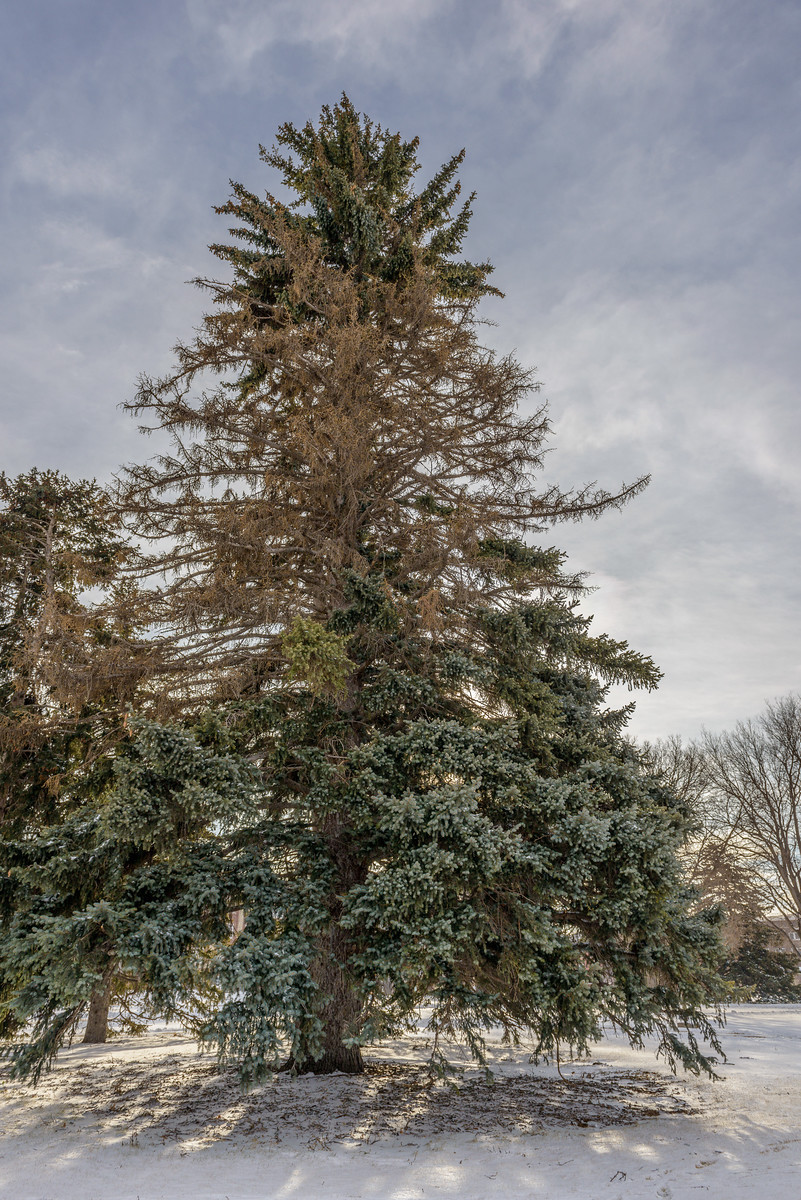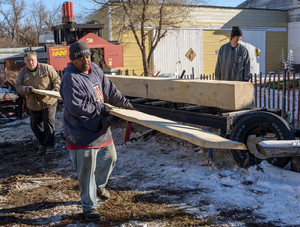Champion blue spruce removed from Dean's Green

The Nebraska Champion Colorado Blue Spruce on the Dean’s Green was felled Wednesday morning.
Prior to the removal, Chadron State College horticulturist Lucinda Mays and other regional arborists and plant pathologists studied the steady decline of the 75-foot-tall tree for four years.
On Wednesday, Mays brushed away the sawdust to count the rings and estimates the tree was planted in 1930 during the Great Depression. It was likely a bare root seedling since potted trees became more popular after WWII, Mays said.
Kenny Groves, certified arborist, and his crew completed the tree removal in what Mays described as a smooth process.
Slabs of the 42-inch trunk will be shared with Nebraska tree organizations for educational purposes. The remainder of the trunk was milled Thursday in Chadron while the moisture content was ideal. The lumber may be used for classroom furniture in the Rangeland Complex laboratory building currently under construction. Mays is receiving input from members of the campus community regarding possible uses for the wood and passing along recommendations to the college administration.
Mays plans to develop a display with one slab on campus that will correlate the rings of the tree with significant events in the college’s history.
The tree is noted on an online map of champions maintained by the Nebraska Forest Service. The award was announced in 2002 and will be in place until a new honoree is named.
“It was a grand old tree but there’s no doubt in my mind that it was time for it to come out of this public landscape. I’ve looked at this tree every single day for years now. As we’ve watched, more than half of the tree has turned brown. If it had been out in a canyon somewhere it might have stood a while longer, but the limbs would have been continually dropping,” Mays said.
No single factor can be identified as a cause for the tree’s deterioration. Mays said there was no evidence of a lighting strike, insects or disease. The life span of blue spruce in an urban setting can range from 50-120 years, Mays said.
Category: Campus Announcements, Campus News, Historical



